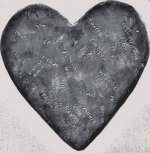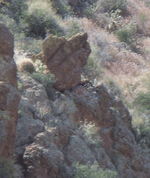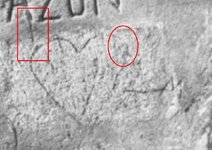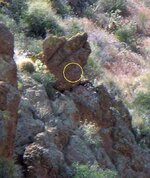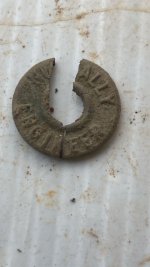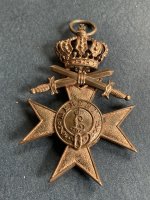deducer
Bronze Member
- Jan 7, 2014
- 2,281
- 4,360
- Primary Interest:
- Other
Unfortunately, I'm unable to confirm that Jim knew the exact location of the cave where the book was found.
Only that the cave contained, was close to or part of a ruin of some kind. He wouldn't tell me where it was though, other than it was within his own area of interest (Tortilla Mtn.), and did show me a photo of a boulder which had a deep carving of a heart, like that on the upper TS. I understood that boulder, dark in color, to be within his area as well, and that he suspected it was where the LH was to be used for orientation. At the time, I was inclined to agree with his assumption, but circumstances have since led me elsewhere.
I'd like to find that boulder though, since I suspect it may lie close to something else I would like to confirm.
That pile of rubble, composed mainly of a single type of easily excavated rock, remains an enigma to me. Although sweeps with MD's have turned up nothing, which might only indicate nothing within their range, it does appear to have been "constructed", rather than formed by entirely natural forces. The existence of three or more parallel trails to-from my primary AOI, also seems to point toward an attempt to sort and ship the excavated rock to a place where it would not be so noticeable....AND to possibly serve a secondary purpose. I have since identified an area closer to the excavation, where I now believe the larger pieces were broken down into sizes more suitable for transport and mound-building. This area is strewn with larger pieces of the same rock type, all of which are angular and sharp-edged as waste rock usually is, but do not match the geology of any adjacent formation from which erosion and gravity would have played the dominant part in it's deposition. All together, the sheer volume of this particular material seems to indicate an excavation of considerable volume.....probably accomplished over a lengthy period.
On the LH, the numbers II, III, and IV (Roman) appear on the "numerical side", and directly opposite to the three words "Meus" on the "word/phrase" side of the stone.
On the H/P stone, the 2, 3, and 4 (Hindu/Arabic) all appear within the chain of symbols below the priest's cross, with the 2 and 3 bracketing the TM symbol.
What's at the end of the trail incorporates all of those numbers, as well as "seal" similar in purpose to that which Howard C. found at the end of his search.
While not the seal, this is also nearby......
View attachment 1378360
Sorry it's a bit out of focus.....didn't find out that the camera was autofocusing on the brush closer to where I was standing, rather than on the subject matter, until I got back home.
But it should be easy to make out what I was interested in at the time.
Interesting that the path carved, differs than the one depicted on the TS. I assume this is related to the CP rock?
In a way, as vexing as it has been sometimes, I'm glad that this has turned out to be a thousand pieces jigsaw puzzle, rather than a simple one that would have been solved too quickly. That there should remain so much to investigate and backtrack, ensures there is something to look forward to, every time I go back. I continue to be particular about filling in as much of the narrative as I can, including the evolution of what began there and became sealed to this day, and how far the trail goes back.


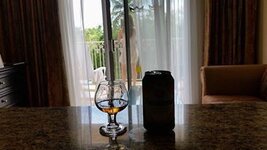
 ROFL - sorry but "like" was not a strong enough compliment for this one!
ROFL - sorry but "like" was not a strong enough compliment for this one! 



